A Bristol academic has achieved a milestone in statistical/mathematical physics by solving a 100-year-old physics problem—the discrete diffusion equation in finite space.



As far back as 2015, the National Institute of Standards and Technology (NIST) began asking encryption experts to submit their candidate algorithms for testing against quantum computing’s expected capabilities — so this is an issue that has already been front of mind for security professionals and organizations. But even with an organization like NIST leading the way, working through all those algorithms to judge their suitability to the task will take time. Thankfully, others within the scientific community have also risen to the challenge and joined in the research.
It will take years for a consensus to coalesce around the most suitable algorithms. That’s similar to the amount of time it took ECC encryption to gain mainstream acceptance, which seems like a fair comparison. The good news is that such a timeframe still should leave the opportunity to arrive at — and widely deploy — quantum-resistant cryptography before quantum computers capable of sustaining the number of qubits necessary to seriously threaten RSA and ECC encryption become available to potential attackers.
The ongoing development of quantum-resistant encryption will be fascinating to watch, and security professionals will be sure to keep a close eye on which algorithms and encryption strategies ultimately prove most effective. The world of encryption is changing more quickly than ever, and it has never been more important for the organizations dependent on that encryption to ensure that their partners are staying ahead of the curve.


I’ve just been reading about reaction time and intelligence. That got me wondering if IQ could be calculated by comparing reaction time age to chronological age at https://www.justpark.com/creative/reaction-time-test/. The average reaction time age I got, with 10 attempts, was 38(rounded to nearest whole number). My actual age is 63.
Take this simple test, and we’ll gauge your age based on your reaction time.
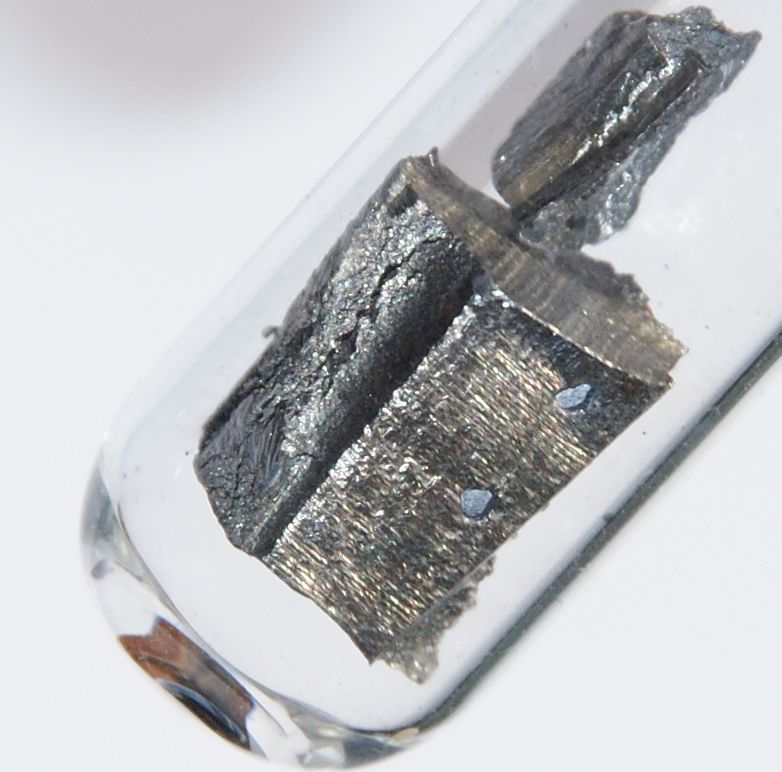
Most of us are familiar with the four classical states of matter – solid, liquid, gas and plasma – but there’s a whole world of exotic states out there. Now, physicists at Radboud and Uppsala Universities have identified a new one named “self-induced spin glass,” which could be used to build new artificial intelligence platforms.
Magnetism usually arises when the electrons in the atoms of a material all spin in the same direction. But in a spin glass, the atomic magnets have no order, all spinning in random directions. The “glass” part of the name comes from the similarities to how atoms are arranged amorphously in a piece of regular old glass.
So far spin glasses have only been found in certain alloys, but now, researchers have discovered that the state occurs naturally in the pure element neodymium. To differentiate it from the alloy version, they’ve called the new state self-induced spin glass.
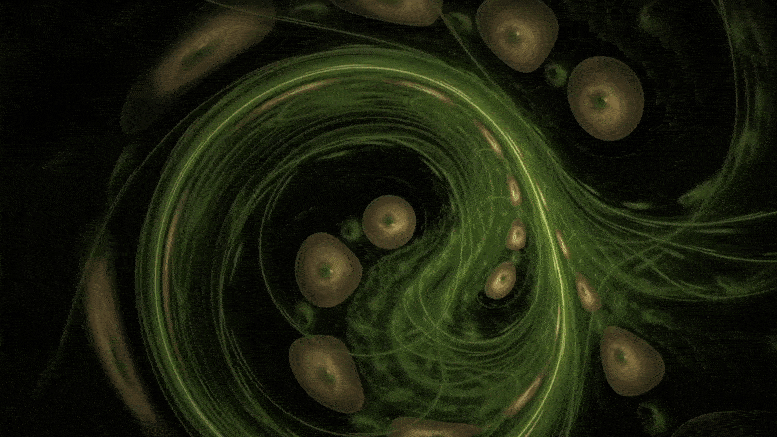
The strongest permanent magnets today contain a mix of the elements neodymium and iron. However, neodymium on its own does not behave like any known magnet, confounding researchers for more than half a century. Physicists at Radboud University and Uppsala University have shown that neodymium behaves like a so-called ‘self-induced spin glass,’ meaning that it is composed of a rippled sea of many tiny whirling magnets circulating at different speeds and constantly evolving over time. Understanding this new type of magnetic behavior refines our understanding of elements on the periodic table and eventually could pave the way for new materials for artificial intelligence. The results will be published in Science on May 29, 2020.
“In a jar of honey, you may think that the once clear areas that turned milky yellow have gone bad. But rather, the jar of honey starts to crystallize. That’s how you could perceive the ‘aging’ process in neodymium.” Alexander Khajetoorians, professor in Scanning probe microscopy, together with professor Mikhail Katsnelson and assistant professor Daniel Wegner, found that the material neodymium behaves in a complex magnetic way that no one ever saw before in an element on the periodic table.
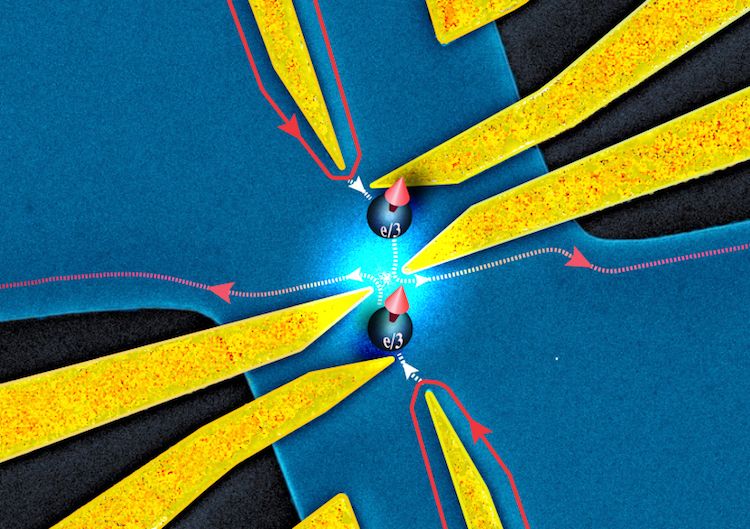
Anyons – the particle-like collective excitations that can exist in some 2D materials – tend to bunch together in a two-dimensional conductor. This behaviour, which has now been observed by physicists at the Laboratory of Physics of the ENS (LPENS) and the Center for Nanoscience and Nanotechnologies (C2N) in Paris, France, is completely different to that of electrons, and experimental evidence for it is important both for fundamental physics and for the potential future development of devices based on these exotic quasiparticles.
The everyday three-dimensional world contains two types of elementary particles: fermions and bosons. Fermions, such as electrons, obey the Pauli exclusion principle, meaning that no two fermions can ever occupy the same quantum state. This tendency to flee from each other is at the heart of a wide range of phenomena, including the electronic structure of atoms, the stability of neutron stars and the difference between metals (which conduct electric current) and insulators (which don’t). Bosons such as photons, on the other hand, tend to bunch together – a gregarious behaviour that gives rise to superfluid and superconducting behaviours when many bosons exist in the same quantum state.
Within the framework of quantum mechanics, fermions also differ from bosons in that they have antisymmetric wavefunctions – meaning that a minus sign (that is, a phase φ equal to π) is introduced whenever two fermions are exchanged. Bosons, in contrast, have symmetric wavefunctions that remain the same when two bosons are exchanged (φ=0).
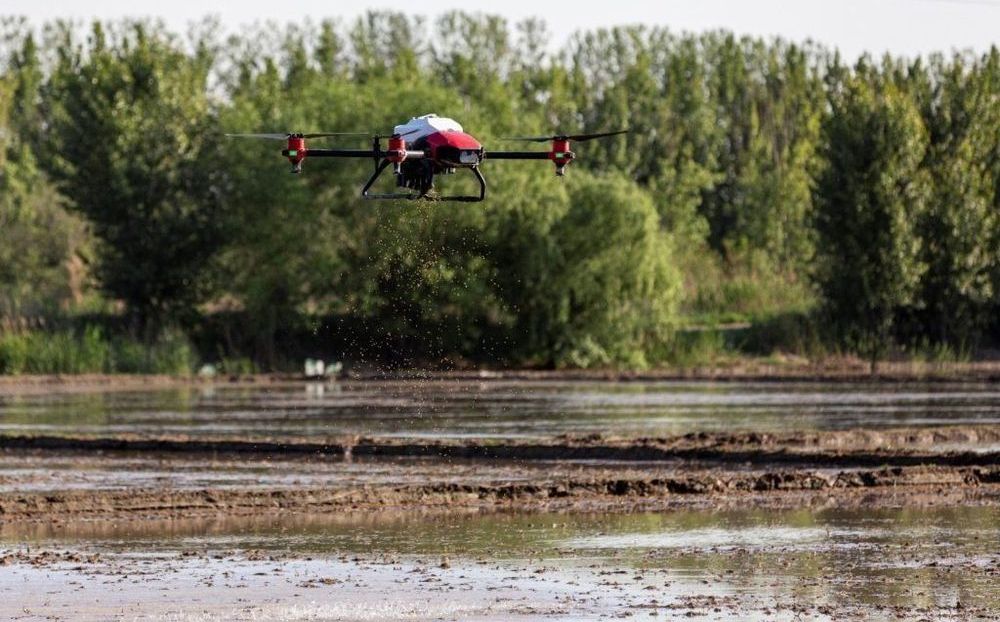
One of China’s largest agricultural drone companies is helping to overhaul the rice-farming industry.
XAG recently launched a rice-seeding demonstration of seeding via drone at Happy Farms, an agricultural park in Guangdong province.
Circa 2017 face_with_colon_three
For the first time, scientists have found a genetic mutation that appears to offer a measure of protection against some of the biological effects of ageing.
And, as far as we know, it looks like the only community in the world known to harbour it is an Old Order Amish community living in Indiana.
The mutation can occur on one or both copies of a gene called SERPINE1. It’s known that when both gene copies are mutated, it can lead to a rare genetic bleeding disorder — and the Amish community in question is susceptible to it.
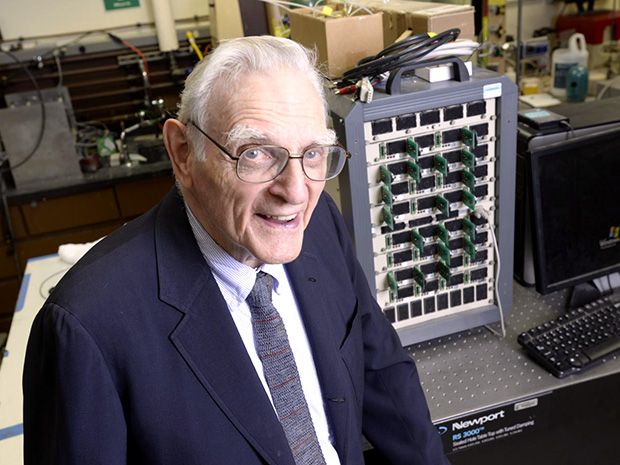
Circa 2017
Electric car purchases have been on the rise lately, posting an estimated 60 percent growth rate last year. They’re poised for rapid adoption by 2022, when EVs are projected to cost the same as internal combustion cars. However, these estimates all presume the incumbent lithium-ion battery remains the go-to EV power source. So, when researchers this week at the University of Texas at Austin unveiled a new, promising lithium- or sodium–glass battery technology, it threatened to accelerate even rosy projections for battery-powered cars.
“I think we have the possibility of doing what we’ve been trying to do for the last 20 years,” says John Goodenough, coinventor of the now ubiquitous lithium-ion battery and emeritus professor at the Cockrell School of Engineering at the University of Texas, Austin. “That is, to get an electric car that will be competitive in cost and convenience with the internal combustion engine.” Goodenough added that this new battery technology could also store intermittent solar and wind power on the electric grid.
Yet, the world has seen alleged game-changing battery breakthroughs come to naught before. In 2014, for instance, Japanese researchers offered up a cotton–based (!) new battery design that was touted as “energy dense, reliable, safe, and sustainable.” And if the cotton battery is still going to change the world, its promoters could certainly use a new wave of press and media releases, as an Internet search on their technology today produces links that are no more current than 2014–2015 vintage.